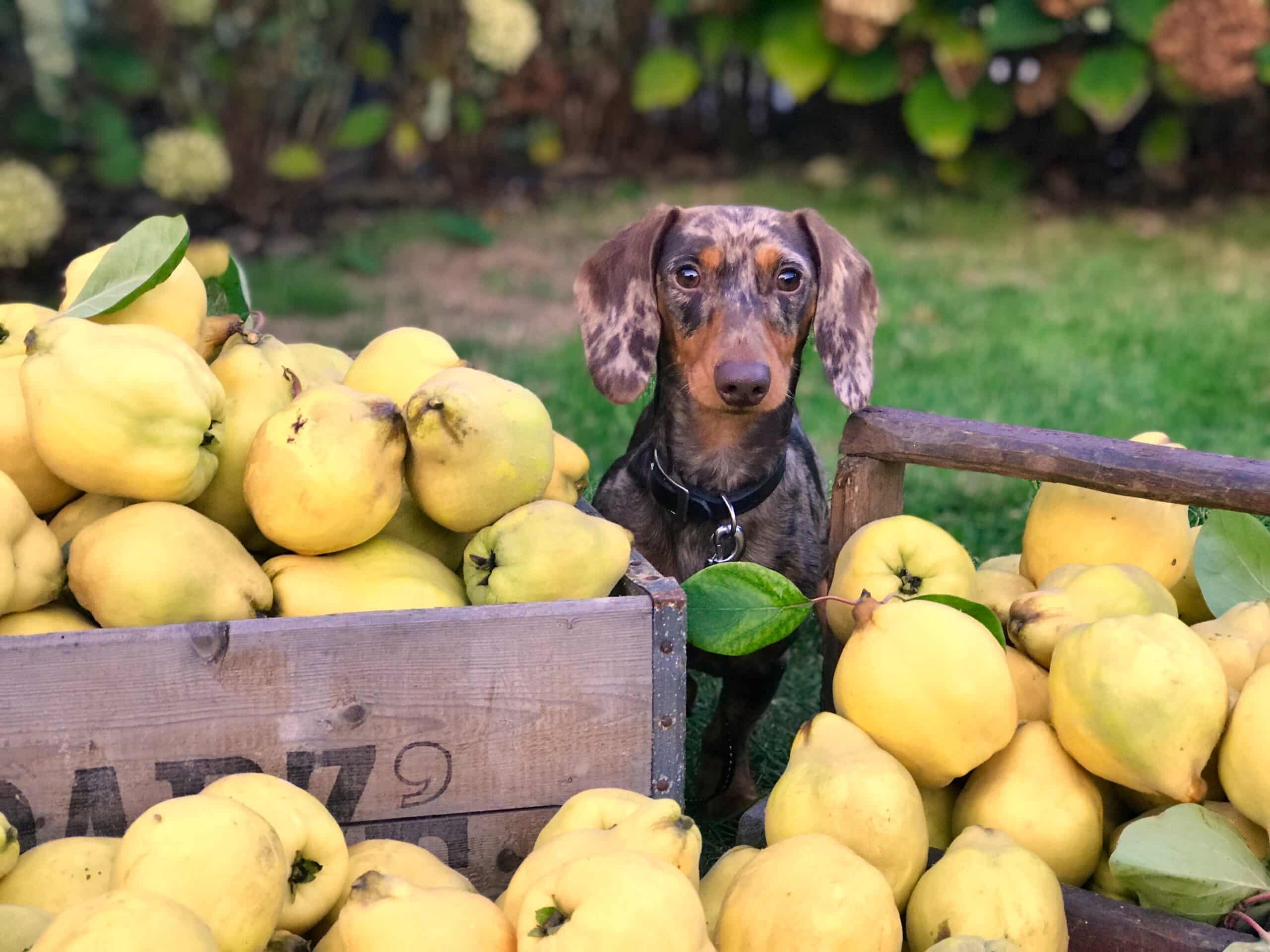Top 15 Popular Dog Treats: Tail-Wagging Favorites Your Pup Will Love
Who doesn’t love seeing their furry friend’s tail wag with excitement at the sight of a tasty treat? As dog owners, we know the joy of rewarding our loyal companions with delicious morsels. But with…
Who doesn’t love seeing their furry friend’s tail wag with excitement at the sight of a tasty treat? As dog owners, we know the joy of rewarding our loyal companions with delicious morsels. But with so many options on the market, finding the best treats can be overwhelming.
Types of Popular Dog Treats
Dog treats come in various forms, each designed to cater to different preferences and needs. We’ve categorized the most popular types of dog treats to help you choose the best option for your furry friend.
Crunchy Biscuits and Cookies
Crunchy biscuits and cookies are classic dog treats that provide a satisfying crunch. These treats often help reduce tartar buildup and promote dental health. Popular options include Milk-Bone Mini’s Flavor Snacks and Blue Buffalo Health Bars Crunchy Dog Biscuits. These treats come in various flavors like pumpkin, cinnamon, bacon, egg, and cheese. Crunchy treats are typically oven-baked and made with natural ingredients, making them a wholesome choice for dogs. They’re ideal for dogs who enjoy a hearty chew and can be used as occasional rewards or training incentives.
Soft and Chewy Treats
Soft and chewy treats are perfect for dogs who prefer a more tender texture. These treats are often easier to chew, making them suitable for older dogs or those with dental issues. Popular options in this category include Rachael Ray Nutrish Burger Bites and Blue Buffalo BLUE Bits Natural Soft-Moist Training Dog Treats. Soft treats come in various flavors like beef, chicken, and turkey. They’re often made without artificial flavors or meat by-products, catering to dogs with sensitive stomachs. These treats are excellent for training sessions due to their small size and appealing texture.
Dental Chews
Dental chews serve a dual purpose: they’re tasty treats that also promote oral health. These chews are designed to clean teeth, freshen breath, and reduce plaque and tartar buildup. Popular dental chews often feature ridges and nubs that help scrub teeth as dogs chew. Some dental treats contain ingredients like chlorophyll or mint to freshen breath. It’s important to choose dental chews appropriate for your dog’s size and chewing habits. Regular use of dental chews, combined with proper dental care, can contribute to better overall oral health for your dog.
Training Treats
Training treats are specifically designed to be small, low-calorie, and highly appealing to dogs. These treats are perfect for positive reinforcement during training sessions. Ideal training treats are soft, easily breakable, and can be quickly consumed without distracting the dog from the task at hand. They often come in pouches for easy dispensing during training. Popular flavors include chicken, beef, and cheese. When using training treats, it’s crucial to adjust your dog’s regular meal portions to maintain a balanced diet and prevent overfeeding.
Freeze-Dried Treats
Freeze-dried treats offer a unique texture and intense flavor that many dogs love. These treats are made by removing moisture from raw ingredients, preserving their nutritional value and natural taste. Common freeze-dried treats include chicken, beef, liver, and fish. They’re often single-ingredient treats, making them a good option for dogs with food sensitivities or allergies. Freeze-dried treats are lightweight, making them convenient for travel or outdoor activities. They have a long shelf life and don’t require refrigeration. When choosing freeze-dried treats, look for high-quality, human-grade ingredients to ensure the best nutrition for your dog.
Factors to Consider When Choosing Dog Treats
Selecting the right treats for your dog involves more than just picking their favorite flavor. We’ll explore key factors to consider when choosing dog treats, ensuring you make informed decisions for your furry friend’s health and happiness.
Nutritional Value
Treats’ nutritional value impacts your dog’s overall diet. High-quality treats contain animal-sourced protein as the first ingredient, providing essential amino acids. Look for treats with natural ingredients and avoid artificial additives, preservatives, or fillers. Freeze-dried treats, like liver or chicken, offer intense flavor and retain nutritional value. Consider treats with added benefits, such as omega-3 fatty acids for coat health or glucosamine for joint support. Balance treat intake with regular meals to maintain a nutritious diet. Remember, treats shouldn’t exceed 10% of your dog’s daily caloric intake to prevent nutrient deficiencies.
Size and Texture
Treat size and texture are crucial for your dog’s safety and enjoyment. Choose treats appropriately sized for your dog’s breed and age. Small, bite-sized treats are ideal for training sessions, allowing for quick consumption without interruption. Soft, chewy treats work well for older dogs or those with dental issues. Crunchy treats can help maintain dental health by reducing plaque buildup. Consider your dog’s chewing habits and any dental concerns when selecting textures. For puppies or small breeds, opt for smaller, softer treats to prevent choking hazards. Larger dogs may prefer substantial treats that satisfy their chewing instincts.
Flavor Preferences
Dogs have diverse flavor preferences, and finding treats they love enhances training and bonding. Popular flavors include chicken, beef, pork, and fish. Some dogs enjoy unique flavors like peanut butter or sweet potato. Experiment with different flavors to discover your dog’s favorites. High-value treats, such as freeze-dried liver or cheese, are particularly enticing and useful for training challenging behaviors. Consider rotating flavors to prevent boredom and maintain interest. Natural, single-ingredient treats often have intense flavors that dogs find appealing. Pay attention to your dog’s reactions to different flavors and adjust accordingly.
Calorie Content
Monitoring calorie content in treats is essential for maintaining your dog’s healthy weight. Check the calorie information on treat packaging and factor it into your dog’s daily caloric intake. Low-calorie treats allow for more frequent rewarding without overfeeding. Consider breaking larger treats into smaller pieces to reduce calorie consumption while still providing rewards. For training sessions, opt for tiny, low-calorie treats that allow for multiple repetitions without excessive calorie intake. Be mindful of high-fat treats, as they’re often calorie-dense. Adjust your dog’s regular meal portions on days with increased treat consumption to maintain caloric balance.

Special Dietary Needs
Consider your dog’s exact dietary requirements when selecting treats. For dogs with food sensitivities or allergies, choose hypoallergenic treats or those made with limited ingredients. Grain-free options are available for dogs with grain sensitivities. Low-fat treats are suitable for dogs with pancreatitis or weight management needs. For dogs with diabetes, look for treats with low glycemic index ingredients. Senior dogs may benefit from treats containing joint-supporting ingredients like glucosamine and chondroitin. If your dog has dental issues, soft treats or dental chews can be appropriate choices. Always consult your veterinarian before introducing new treats, especially if your dog has exact health concerns or dietary restrictions.
Top Ingredients in Quality Dog Treats
Quality dog treats contain carefully selected ingredients that provide both nutrition and flavor. We’ve compiled a list of common ingredients found in high-quality dog treats, categorized by protein sources, fruits and vegetables, and grains and alternatives.
Protein Sources
High-quality dog treats prioritize protein-rich ingredients to support muscle health and overall well-being. Common protein sources include:
- Chicken: A lean, easily digestible protein
- Beef: Rich in essential nutrients and flavor
- Fish: Provides omega-3 fatty acids for coat and skin health
- Turkey: Another lean option, often used in hypoallergenic treats
- Lamb: A novel protein source for dogs with sensitivities
- Eggs: Packed with essential amino acids
- Liver: Nutrient-dense organ meat, often used as a flavoring
These protein sources are typically listed as the first ingredient in quality treats, ensuring dogs receive adequate protein content. Look for treats that use real meat rather than meat by-products or artificial meat flavors.
Fruits and Vegetables
Fruits and vegetables in dog treats offer essential vitamins, minerals, and fiber. Common healthy options include:
- Pumpkin: Rich in fiber and beta-carotene
- Sweet potato: Provides vitamins A and C
- Blueberries: Packed with antioxidants
- Carrots: Good source of vitamin A and fiber
- Apples: Offer vitamins A and C (seeds removed)
- Bananas: High in potassium and vitamin B6
- Green beans: Low-calorie and high in fiber
- Spinach: Rich in iron and other nutrients
These ingredients are often used to supplement the main protein source in treats. They add nutritional value and can provide natural sweetness without artificial additives. When selecting treats, look for those that incorporate whole fruits and vegetables rather than artificial flavors or colors.
Grains and Alternatives
While some dogs thrive on grain-free diets, others benefit from certain grains. Common grains and alternatives in quality dog treats include:
- Brown rice: A easily digestible whole grain
- Oats: Provide fiber and essential nutrients
- Quinoa: A gluten-free, protein-rich seed
- Chickpeas: High in protein and fiber
- Lentils: Another protein-rich legume option
- Barley: Offers fiber and essential minerals
- Sweet potato flour: A grain-free alternative
- Coconut flour: Another grain-free option, rich in fiber
These ingredients often serve as binders in treats and can provide additional nutrients. For dogs with grain sensitivities, look for treats that use alternative ingredients like sweet potato or chickpea flour. Always check the ingredient list to ensure the treat aligns with your dog’s dietary needs and preferences.
Popular Treat Flavors for Dogs
Dogs have diverse taste preferences when it comes to treats. Understanding popular flavors can help pet owners choose the most appealing options for their furry friends. Let’s explore some of the most sought-after treat flavors for dogs.
Meat-Based Flavors
Meat-based treats are often the top choice for dogs due to their high protein content and enticing aroma. Hot dogs, cut into slices, are highly valued by many dogs as a special reward. Chicken, whether boiled, roasted, or in freeze-dried form, is a favorite among canines. Beef-flavored treats, including jerky and brisket, are also popular choices.
Liver treats, such as freeze-dried liver or liver pâté, are highly rewarding for dogs. Exact variations like freeze-dried lamb lung, chicken liver, and duck liver are particularly enticing. Salmon, both freeze-dried and canned, is another high-value option. Turkey-based treats, including turkey balls and jerky, are well-received by many dogs. For an exceptionally high-reward treat, some pet owners opt for pig snout treats.
Peanut Butter and Other Non-Meat Options
While meat-based flavors dominate the dog treat market, non-meat options also hold important appeal. Peanut butter is a standout favorite among dogs, offering a creamy texture and rich flavor. Many commercially available treats incorporate peanut butter, and it’s also a popular ingredient in homemade dog treats.
Other non-meat flavors that dogs enjoy include sweet potato, pumpkin, and various fruits. These options provide a balance of taste and nutrition, often appealing to dogs with dietary restrictions or those needing lower-calorie treats. Carrot-flavored treats offer a crunchy texture that many dogs appreciate. Some treats combine fruit flavors with yogurt for a creamy, sweet option that can be particularly refreshing for dogs in warmer weather.
Treats for Specific Purposes
Dog treats serve various purposes beyond just rewarding our furry friends. Here’s a breakdown of popular treats designed for exact needs:
Training Rewards
Training rewards are essential for positive reinforcement during obedience sessions. These treats are typically small, soft, and highly palatable to keep dogs motivated. Popular options include:
- Soft and moist treats with real meat as the primary ingredient
- Low-calorie options (around 3 kcal per treat) suitable for frequent rewards
- Freeze-dried liver or other meats, highly valued by dogs
- Small, bite-sized treats in various flavors
- Human foods like boiled chicken, cheese, or hot dogs (in moderation)
When selecting training rewards, consider treats that are easy to carry, quick to eat, and irresistible to your dog. Opt for options with natural ingredients and avoid artificial additives for the best nutritional value during training sessions.
Dental Health
Dental health treats help maintain your dog’s oral hygiene by reducing plaque and tartar buildup. These treats often feature:
- Textured surfaces to scrape teeth clean
- Ingredients that promote fresh breath
- Enzymes to break down plaque
- Abrasive textures to stimulate gums
Popular dental treats include:
- Rawhide alternatives made from digestible ingredients
- Chews infused with chlorophyll or parsley for breath freshening
- Treats shaped to reach all areas of the mouth
- Dental sticks designed for daily use
When choosing dental treats, look for options approved by veterinary dental associations and consider your dog’s size and chewing habits to ensure safety and effectiveness.
Joint Support
Joint support treats are formulated to promote healthy joints and mobility, especially beneficial for older dogs or breeds prone to joint issues. Key features include:
- Glucosamine and chondroitin for cartilage health
- Omega-3 fatty acids to reduce inflammation
- MSM (Methylsulfonylmethane) for joint pain relief
- Collagen to support connective tissue
Popular joint support treats come in various forms:
- Soft chews for easy consumption
- Crunchy biscuits with added joint-supporting ingredients
- Flavored tablets disguised as treats
- Liquid supplements to mix with food
When selecting joint support treats, consult with your veterinarian to determine the appropriate dosage and ingredients for your dog’s exact needs.
Calming Treats
Calming treats help reduce anxiety and promote relaxation in dogs during stressful situations. These treats often contain:
- L-Theanine for stress reduction
- Chamomile to soothe nerves
- Melatonin to promote sleep and calmness
- CBD oil for anxiety relief (where legally available)
Popular calming treats include:
- Soft chews with a blend of calming ingredients
- Freeze-dried treats infused with relaxing herbs
- Long-lasting chews to keep dogs occupied
- Lickable treats for quick consumption
When choosing calming treats, look for options with natural ingredients and avoid those with artificial additives. It’s essential to consult with your veterinarian before introducing any calming supplements to your dog’s diet, especially if they’re taking other medications or have underlying health conditions.
How to Introduce New Treats to Your Dog
Introducing new treats to your dog requires a thoughtful approach to ensure a positive experience. We’ll explore two essential aspects of this process: portion control and observing your dog’s reactions.
Portion Control
Portion control is crucial when introducing new treats to your dog. Start by offering small amounts of the new treat, typically no more than 10% of your dog’s daily caloric intake. Break larger treats into smaller pieces to extend the enjoyment and prevent overfeeding. Gradually increase the portion size if your dog tolerates the treat well. Monitor your dog’s weight and adjust treat portions accordingly to maintain a healthy balance. Remember, treats should complement your dog’s regular diet, not replace it. For dogs with exact dietary needs or health concerns, consult your veterinarian to determine appropriate portion sizes for new treats.
Observing Your Dog’s Reactions
Carefully observing your dog’s reactions to new treats is essential for their health and enjoyment. Introduce one new treat at a time and watch for any signs of digestive upset, such as vomiting or diarrhea. Pay attention to your dog’s enthusiasm for the treat – increased excitement may indicate a new favorite, while disinterest might suggest the treat isn’t appealing. Look for allergic reactions, including excessive scratching, skin redness, or changes in behavior. If any adverse reactions occur, discontinue the treat immediately and consult your veterinarian. Positive reactions, like tail wagging and eager anticipation, signal that the treat is a hit. Keep a log of your dog’s responses to different treats to help identify preferences and any potential sensitivities over time.
Conclusion
Choosing the right treats for our furry friends is an important part of responsible pet ownership. We’ve explored a wide range of options from crunchy biscuits to specialized dental chews and training rewards. By considering factors like nutritional value size texture and flavor preferences we can make informed decisions that benefit our dogs’ health and happiness.
Remember to introduce new treats gradually and monitor your dog’s reactions. With the right approach treating our canine companions can be a rewarding experience that strengthens our bond and enhances their well-being. Let’s make every treat count!

